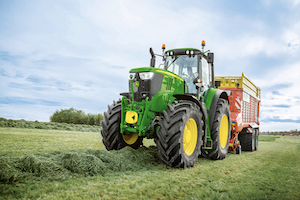Hay tests are used by agricultural producers to better understand the nutrient quality of the feed they are providing to their livestock. Ben Beckman, extension educator at the University of Nebraska-Lincoln (UNL), is now providing insight into the results producers receive from their hay tests.
Beckman notes that the results are typically sorted into two different groups or columns. One is usually labeled “as received” or “as fed,” while the other is labeled “dry basis.” Beckman says that “as received” is the analysis of the sample as it was provided. This information is used to determine how much hay needs to be given to livestock. “Dry basis” represents the hay after all moisture has been removed. It’s important to recognize that this does not accurately represent the sample as it sits in the field.
However, this does not mean that “dry basis” is not a worthwhile measurement. When comparing feeds and finding the correct ratios in a ration, this information is critical for comparing factors at a standard level. For example, a test on hay and silage can come back as equal on a “dry basis,” which would indicate that they can provide the same amount of energy when dried out and fed. While this may be close to reality for hay, silage often contains more water as-is. In the end, a producer would have to feed more silage than hay to achieve the same amount of energy due to the extra water weight.
Understanding the differences and importance of both “as received” and “dry basis” measurements is essential to making the most of feed. More agricultural tips can be found on the UNL Cropwatch website.
